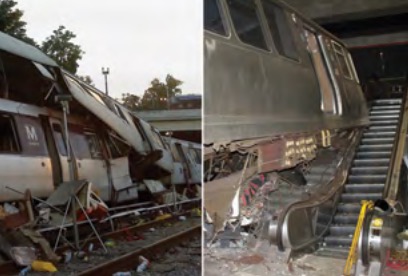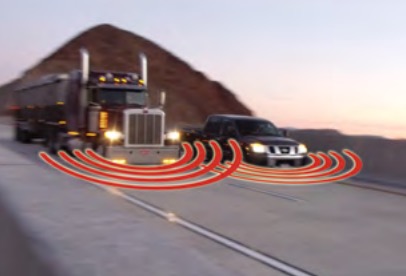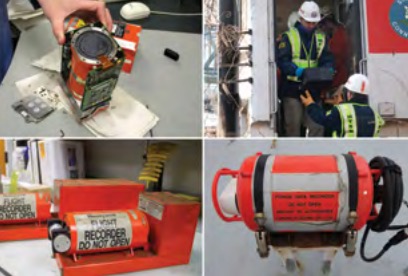NATIONAL TRANSPORTATION SAFETY BOARD (NTSB)
NTSB 2016 MOST WANTED LIST OF TRANSPORTATION SAFETY IMPROVEMENTS
Critical changes needed to reduce transportation accidents and save lives
Reduce Fatigue-Related Accidents
Human fatigue affects the safety of the traveling public in all modes of transportation. Twenty percent of the 182 major NTSB investigations completed between 2001 and 2012 identified fatigue as a probable cause, contributing factor, or a finding. Combating fatigue requires a comprehensive approach focused on research, education and training, technologies, treatment of sleep disorders, hours-of-service regulations, and on- and off-duty scheduling policies and practices.
 Improve Rail Transit Safety Oversight
Improve Rail Transit Safety Oversight
Rail transit systems must constantly be monitored and improved to maintain and enhance safety, to catch small problems before they become big ones, and to provide extra layers of protection against disasters. Yet oversight of rail transit is sometimes unreliable. Recent investigations have found that oversight authorities of some rail transit systems lacked the ability to oversee safety and take corrective action quickly, despite warnings.
 Promote Availability of Collision Avoidance Technologies in Highway Vehicles
Promote Availability of Collision Avoidance Technologies in Highway Vehicles
Highway vehicle crashes kill and injure thousands of people each year. But these crashes are largely preventable. Currently available collision avoidance technologies for passenger and commercial vehicles (such as trucks and buses) could prevent crashes or minimize their impact, and should be standard equipment on all new vehicles.
Strengthen Occupant Protection
The NTSB has investigated many accidents where strengthened occupant protection systems could have reduced injuries and saved lives. Needed improvements include increased use of existing restraint systems, and better design and implementation of occupant protection systems that preserves survivable space and ensures ease of evacuation.
Disconnect from Deadly Distractions
Since 2003, the NTSB has found PED distraction as a cause or contributing factor in accidents across all modes of transportation. A cultural change is needed for drivers and operators to disconnect from deadly distractions. In regulated transportation, the strict rules minimizing the threat of distraction must be embraced by every operator on every trip. Removing unnecessary distractions is the first step in safely operating any vehicle.
Prevent Loss of Control in Flight in General Aviation
While airline accidents have become relatively rare in the United States, pilots and passengers involved in general aviation operations still die at alarming rates. Between 2008 and 2014, about 47 percent of fatal fixed-wing GA accidents in the U.S. involved pilots losing control of their aircraft in flight, resulting in 1,210 fatalities. Pilots can reduce these accidents through education, technologies, flight currency, self-assessment, and vigilant situational awareness in the cockpit.
Promote the Completion of Rail Safety Initiatives
Laws and regulations require implementation of Positive Train Control—proven to be a life-saving technology that can prevent collisions and derailments—and improved tank car design to prevent ruptures. Yet rail operators continue to be slow to make these required improvements. Further delays must be avoided.
End Substance Impairment in Transportation
In the last 15 years, data show that one-third of highway deaths involved an alcohol-impaired driver. Our new reality is this: impaired driving now involves drugs—including prescribed and over-the-counter medicines—that can affect your ability to drive or operate any vehicle. More and better data will help us understand the scope of the problem and the effectiveness of countermeasures.
Require Medical Fitness for Duty
When safety-critical personnel, such as public vehicle operators, have untreated or undiagnosed medical conditions preventing them from doing their job safely, people can be seriously injured or die. However, medical certification for safety-critical personnel varies across the modes of transportation. The NTSB has recommended comprehensive medical certification systems for safety-critical transportation personnel to ensure that these professionals are medically fit for duty before operating a vehicle.
 Expand Use of Recorders to Enhance Transportation Safety
Expand Use of Recorders to Enhance Transportation Safety
Transportation operators and investigators must have an accurate picture of an accident to prevent future accidents. No single tool has helped determine what went wrong more than recorders. Yet, certain categories of aircraft, trains, ferries, and buses are still not equipped with these critical technologies.
Download full brochure (PDF): NTSB 2016 MOST WANTED LIST of Transportation Safety Improvements
View full report (ntsb.gov): NTSB 2016 MOST WANTED LIST of Transportation Safety Improvements
About the National Transportation Safety Board (NTSB)
www.ntsb.gov
The National Transportation Safety Board is an independent Federal agency charged by Congress with investigating every civil aviation accident the United States and significant accidents in other modes of transportation – railroad, highway, marine and pipeline. The NTSB determines the probable cause of the accidents and issues safety recommendations aimed at preventing future accidents. In addition, the NTSB carries out special studies concerning transportation safety and coordinates the resources of the Federal Government and other organizations to provide assistance to victims and their family members impacted by major transportation disasters.






 RSS Feed
RSS Feed